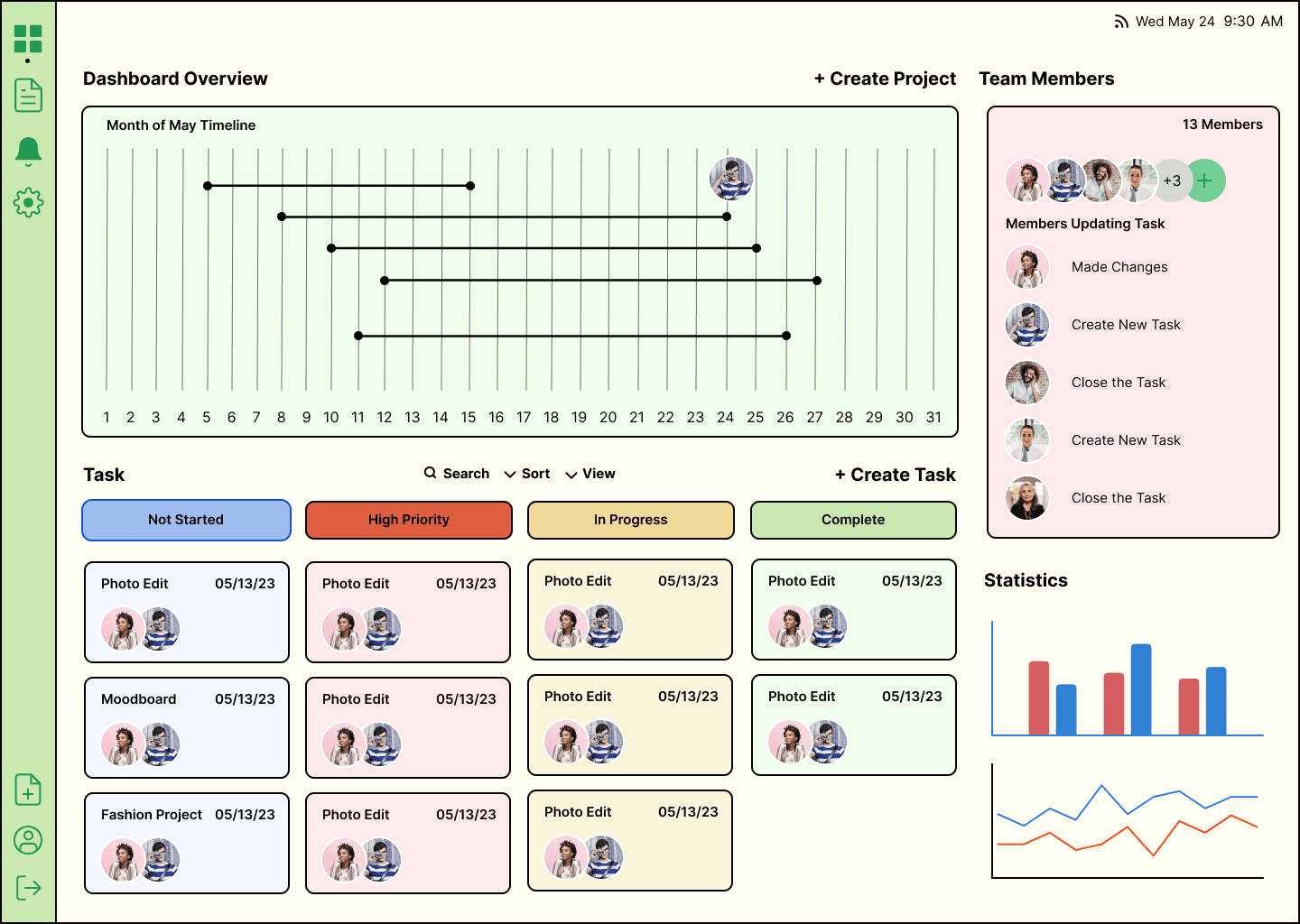Innovating ways to bring collaboration to fashion industry
Focusing on bringing collaborations and unity to the fashion industry by introducing a collaboration web app.

Introduction
Welcome to a deep dive into one of my favorite projects! I'm excited to walk you through this journey, revealing how I navigated from the initial concept to the final realization. It's a story of problem-solving and a deeper understanding of the user, and I'm thrilled to share this intimate look at the process that led to the successful completion of this project.
Challenge
99Yards seeks assistance in developing and integrating crucial features like reminders, video chat setup, milestones, and payments to enhance the overall user experience and optimize their booking services. Our client has identified a market gap in collaboration tools for the fashion industry, highlighting the challenges of group project work.
Solution
We developed a collaborative app tailored to the Fashion Industry and simplified processes for 99 Yards. The app features easily adjustable call sheets, reducing the learning curve for users. Users can effortlessly manage reminders, initiate video calls, and track milestones through an intuitive interface. The design prioritizes user experience, ensuring seamless and efficient project management for those who are in the visual art field. This innovative solution aims to enhance user engagement, improve overall productivity, and provide a user-friendly experience for both new and existing users of 99 Yards.
Research & Interviews
Research & Analysis: In our initial research phase, we conducted comprehensive secondary research, comparing our target platform with similar companies using competitive and SWOT analyses. We assessed Asana, Jira, Miro, and Monday.com. Despite the saturated market for project management tools, our findings highlighted a distinct gap: a lack of a platform tailored to the unique needs of the fashion design sector. This gap presents a compelling opportunity for our team to create a specialized solution that specifically addresses the requirements of our target users.
Survey and Interviews: Following our initial research, we conducted surveys to gather responses from over 20 individuals within the fashion design space, aiming to gain deeper insights. From the respondents, we selected volunteers to participate in interviews, further refining our understanding of the specific needs and preferences of our target users. This iterative process allowed us to collect valuable firsthand information, ensuring that our upcoming platform aligns closely with the practical requirements of those in the fashion design industry.
"People in fashion photography don’t use project management tools. We use something simpler such as Microsoft software or Google Calendar to get time confirmation."
"We use mainly WhatsApp because sometimes people work from different parts of the world."
Ideation & Sketches
Next, we decided to conduct ideation sessions and create sketches to enhance the visualization of our solutions. We meticulously considered our users' needs and the findings from user interviews while sketching the design.
User Flow
Building on our analysis of existing project management tools, we made a simple way for people to use our platform. Even though project tools have many features, we wanted to make it easy for our users. Our goal is to make sure people find our platform easy to use, fitting well with the needs of those in the fashion design world.
Wireframes
We took the next step and created some wireframes to help visualize the flow and bring the ideas to life. Then we presented the wireframes to out stakeholders to gather feedback to improve on the current wirframes
Final Designs
The final designs feature a basic flow with a focus on a Minimum Viable Product (MVP). We streamlined the user interface to ensure a straightforward onboarding process, making key features easily accessible. This approach minimizes complexity while providing essential project management capabilities. Each design choice was made to enhance user experience with clarity and ease of use, aiming to meet the core needs of fashion designers while maintaining simplicity and effectiveness.
Key Takeaways
Effective collaboration within the company played a vital role in developing and finalizing the platform's solutions, resulting in a well-defined MVP that balances essential features with a user-friendly design. Areas for Improvement: The call sheets need to be optimized to better meet user needs and enhance overall efficiency.





